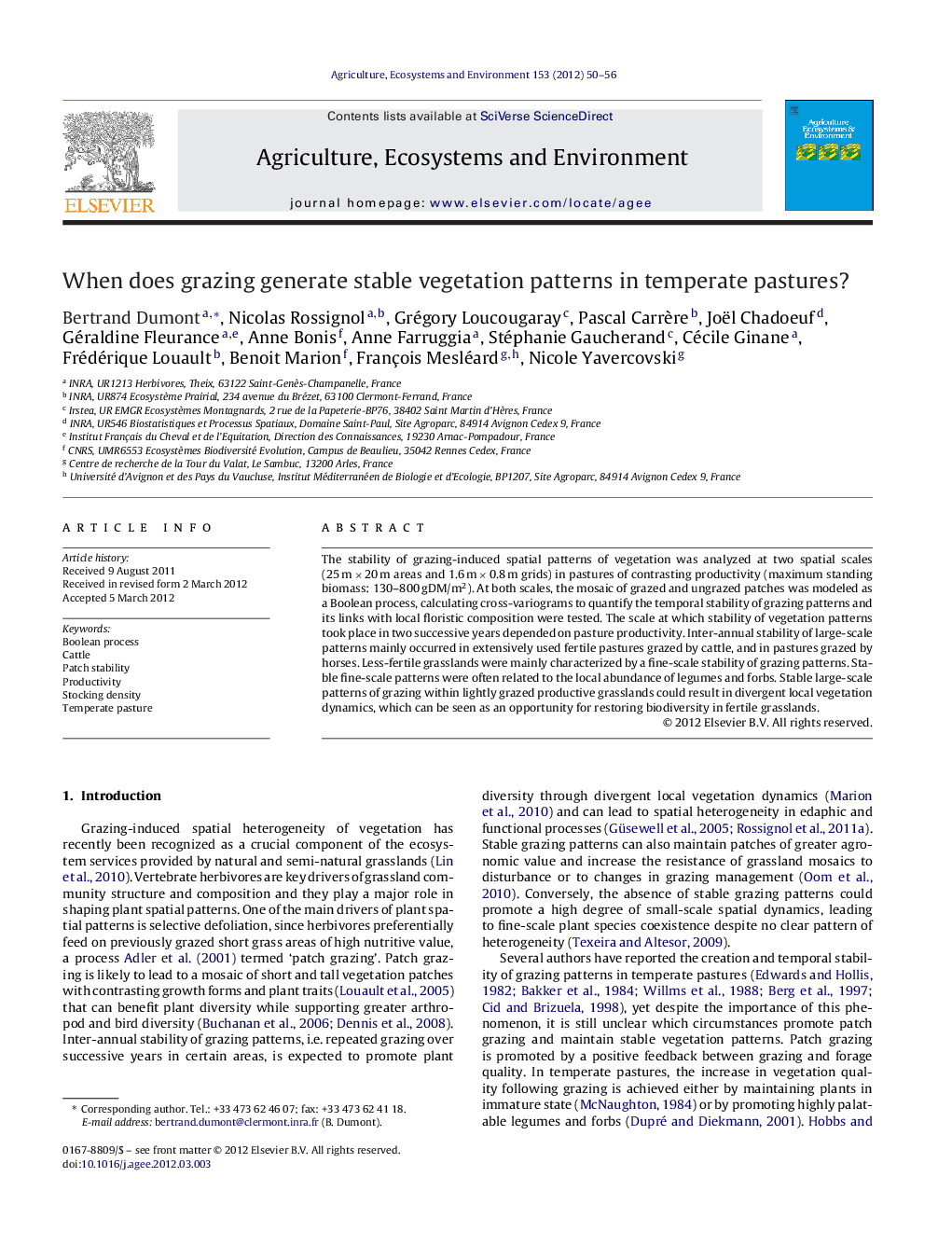| Article ID | Journal | Published Year | Pages | File Type |
|---|---|---|---|---|
| 2414537 | Agriculture, Ecosystems & Environment | 2012 | 7 Pages |
The stability of grazing-induced spatial patterns of vegetation was analyzed at two spatial scales (25 m × 20 m areas and 1.6 m × 0.8 m grids) in pastures of contrasting productivity (maximum standing biomass: 130–800 gDM/m2). At both scales, the mosaic of grazed and ungrazed patches was modeled as a Boolean process, calculating cross-variograms to quantify the temporal stability of grazing patterns and its links with local floristic composition were tested. The scale at which stability of vegetation patterns took place in two successive years depended on pasture productivity. Inter-annual stability of large-scale patterns mainly occurred in extensively used fertile pastures grazed by cattle, and in pastures grazed by horses. Less-fertile grasslands were mainly characterized by a fine-scale stability of grazing patterns. Stable fine-scale patterns were often related to the local abundance of legumes and forbs. Stable large-scale patterns of grazing within lightly grazed productive grasslands could result in divergent local vegetation dynamics, which can be seen as an opportunity for restoring biodiversity in fertile grasslands.
► Herbivores preferentially exploit previously grazed patches. ► Patch grazing leads to patch stability over a grazing season. ► Inter-annual stability of large-scale patterns mainly occurs in fertile pastures.
